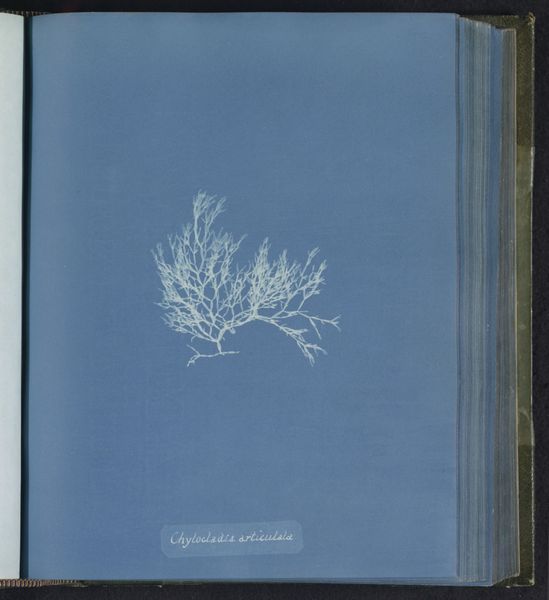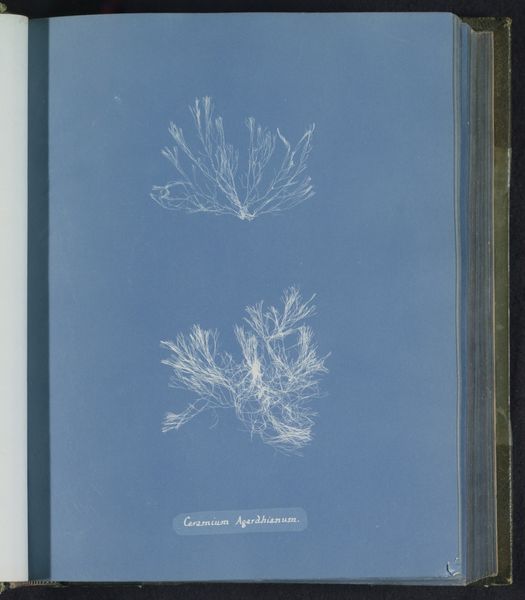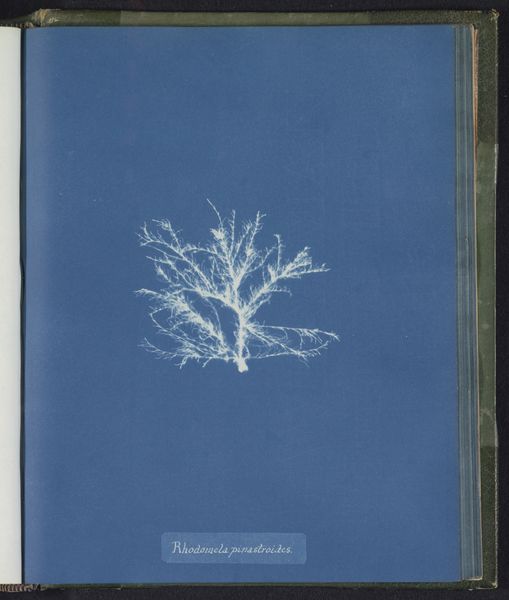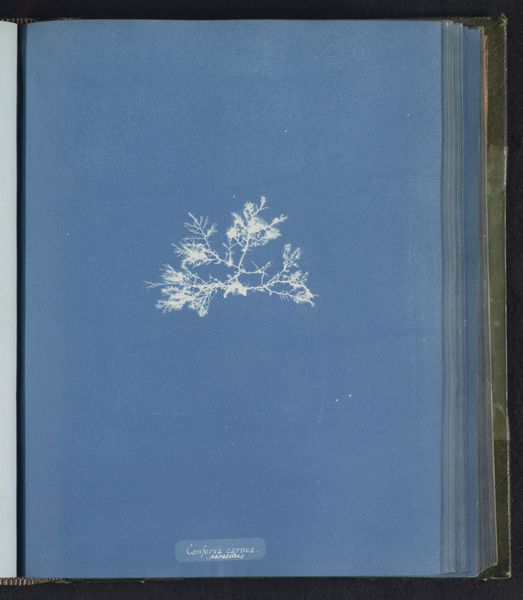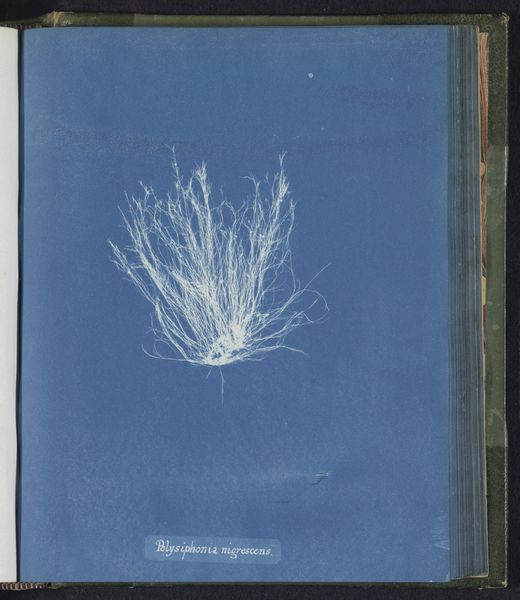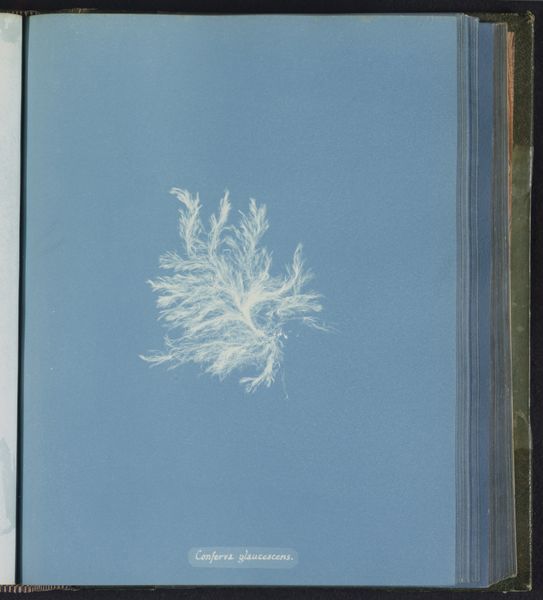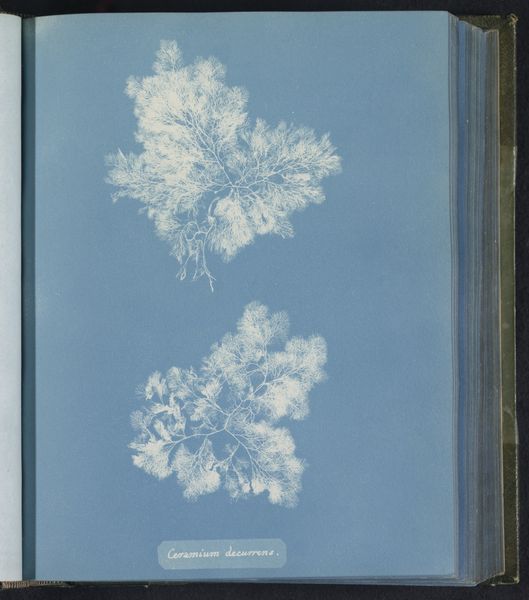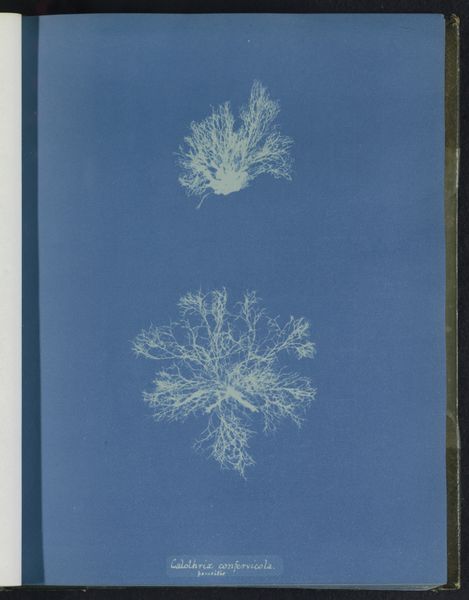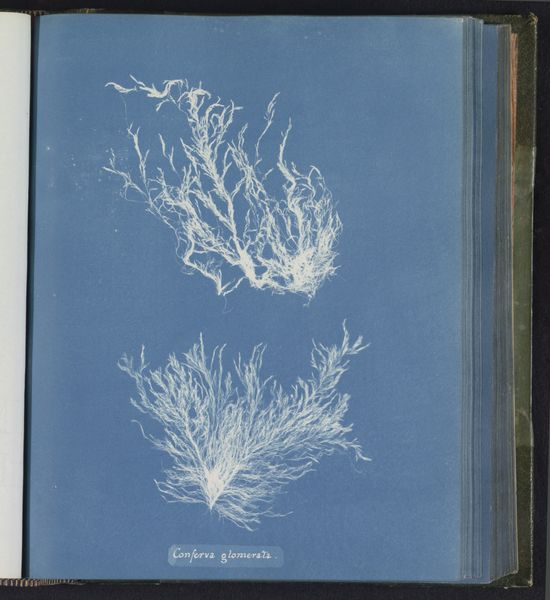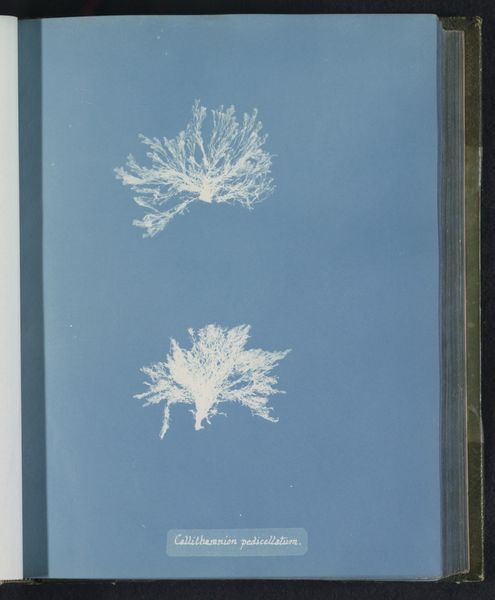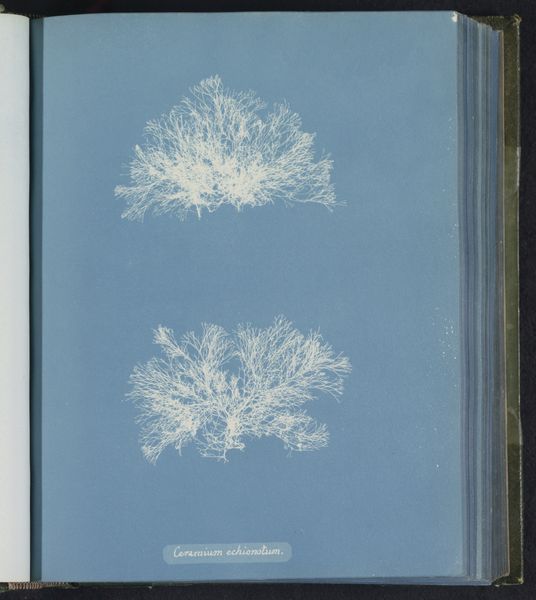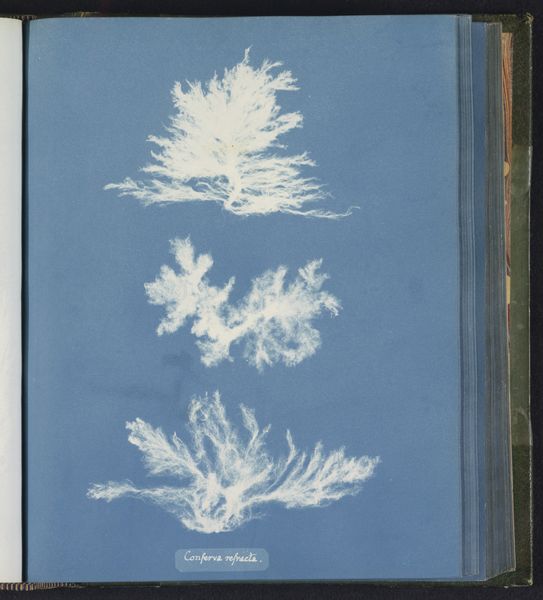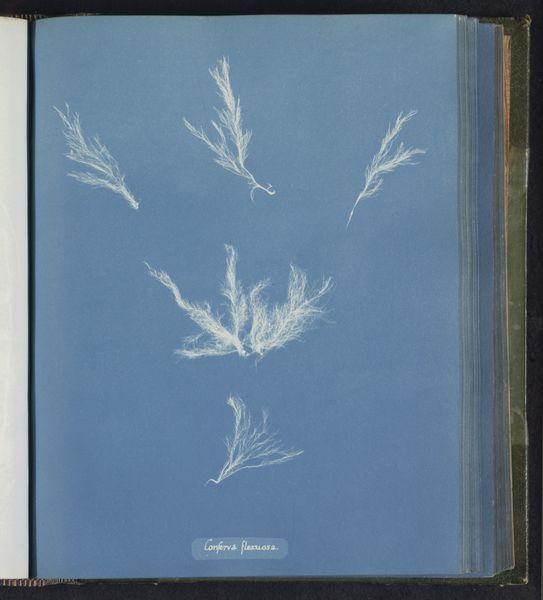
print, paper, cyanotype, photography
# print
#
paper
#
cyanotype
#
photography
Dimensions: height 250 mm, width 200 mm
Copyright: Rijks Museum: Open Domain
Editor: Here we have Anna Atkin's "Chylocladia kaliformis," a cyanotype print from around 1843 to 1853. The stark white against the deep blue is striking. It’s delicate, but also feels incredibly precise. What formal elements stand out to you? Curator: The arresting composition certainly commands attention. Observe the subject: Chylocladia kaliformis, carefully positioned to articulate a clear hierarchical structure, almost a central ‘trunk’ with branching elements. This is not mere documentation, but an arrangement. How does the tonal range contribute to your interpretation? Editor: The limited tonal range, the near absence of grayscale, creates a flattened perspective. It makes me focus on the branching patterns, almost like a roadmap. Does this flatness affect how we perceive depth and volume? Curator: Precisely. Depth, as traditionally rendered through chiaroscuro, is eschewed. Instead, we are offered a plane of stark contrasts, emphasizing the two-dimensional quality of the print itself. The delicate, lace-like structure of the algae is rendered in the purest white, further enhancing the design. Note the lack of atmospheric perspective, drawing attention not to illusory depth but surface and structure. What do you think this reveals? Editor: I think it might reveal the beauty of scientific observation; this work elevates pure data to artistic form. So, rather than rendering the algae in an emotional sense, it presents form and information. Curator: Precisely. It's about a dedication to line, shape, and form as carriers of both scientific information and aesthetic value. A wonderful example of where Art and Science intermingle! I appreciate your insights on its composition and texture. Editor: And I've gained new appreciation for seeing the beauty in objective observation through your insights. Thanks.
Comments
No comments
Be the first to comment and join the conversation on the ultimate creative platform.
